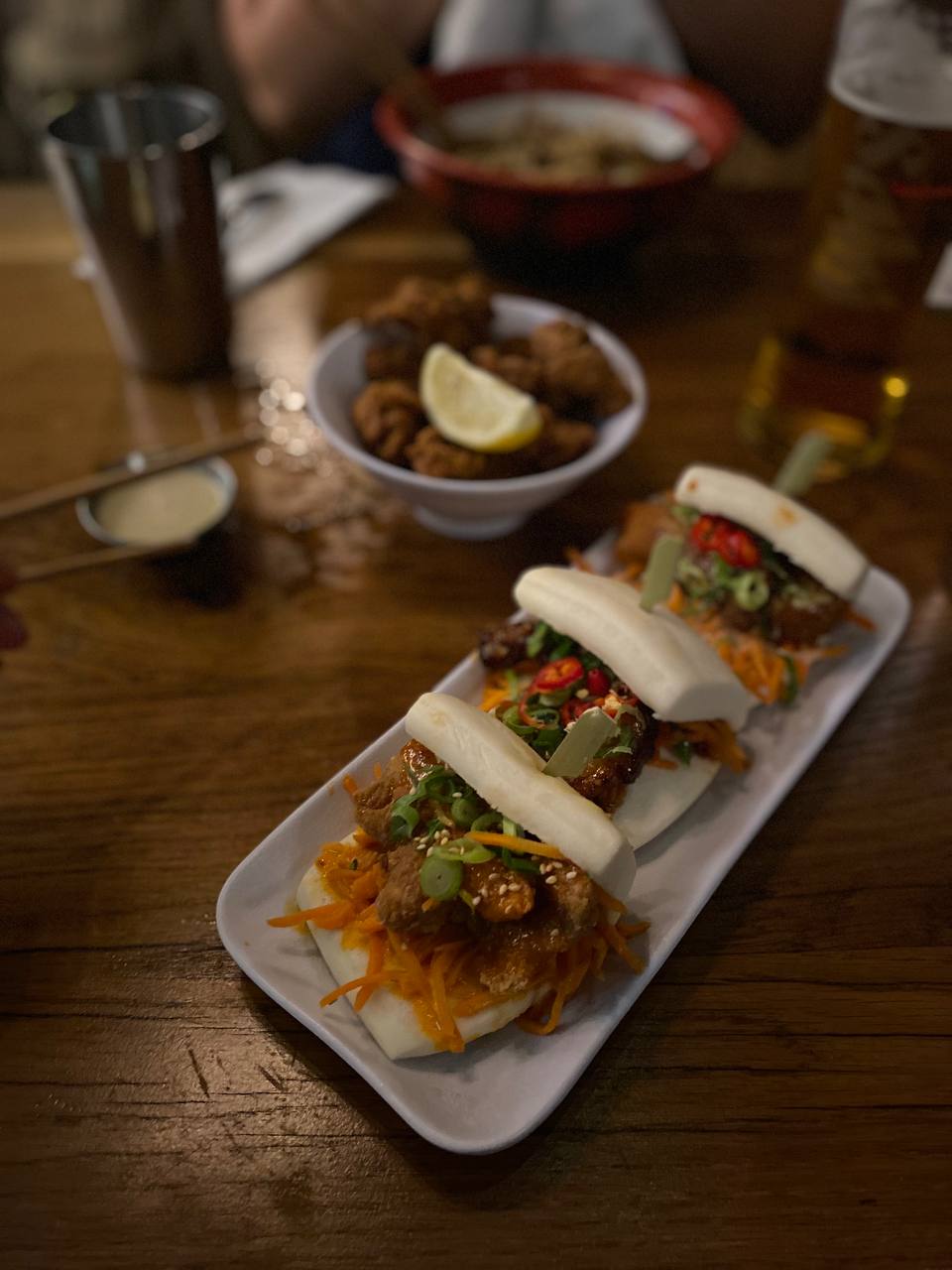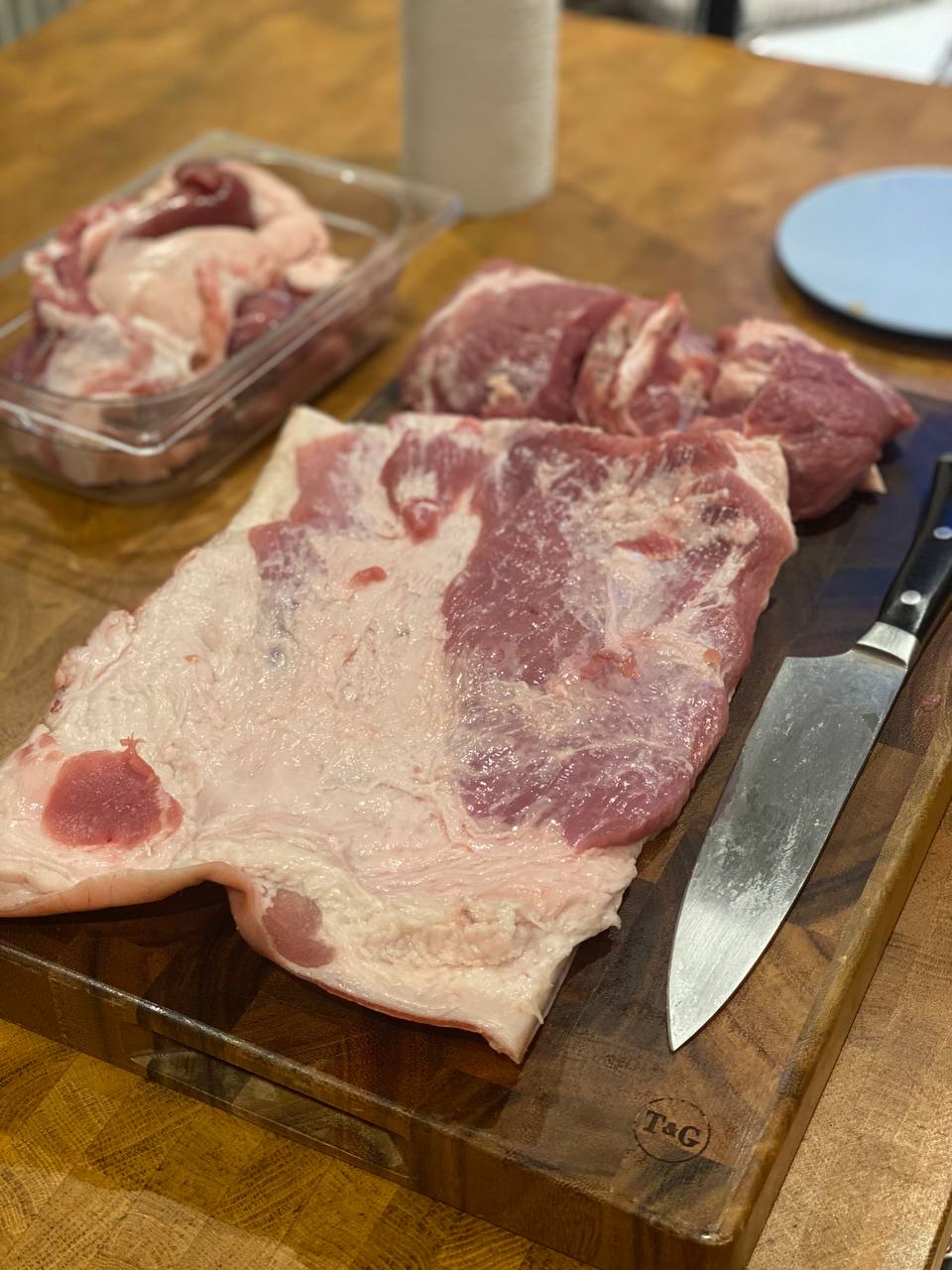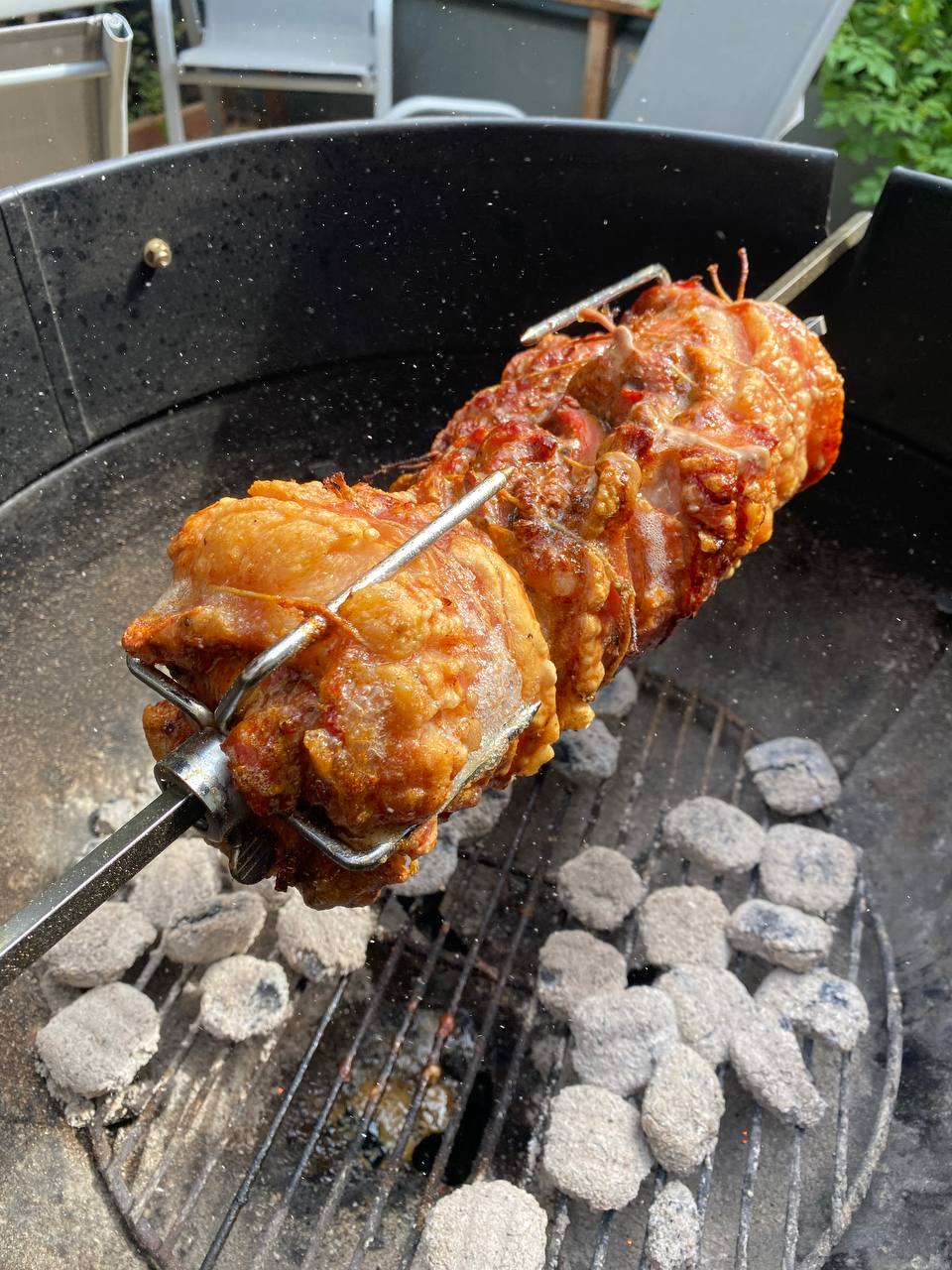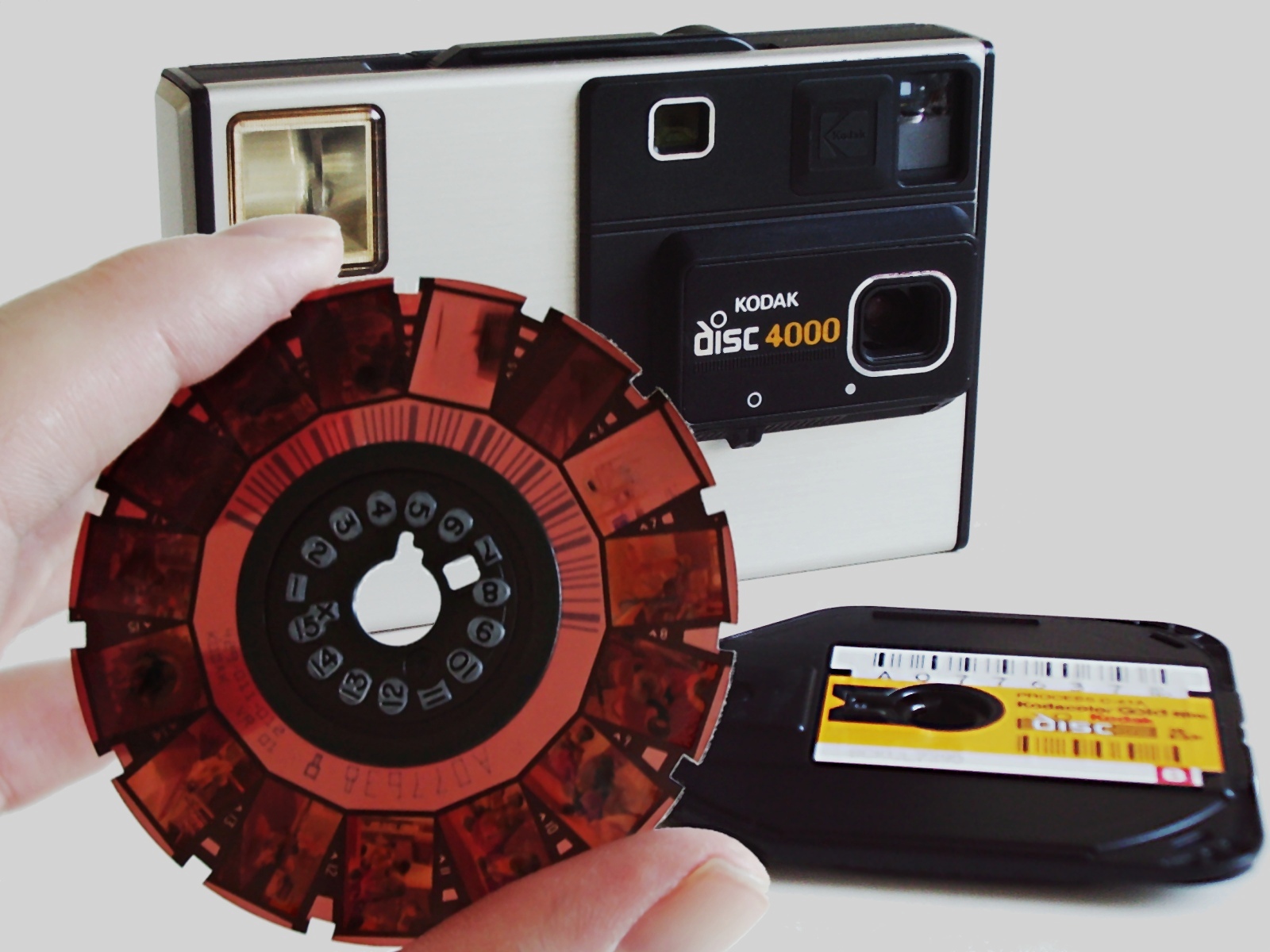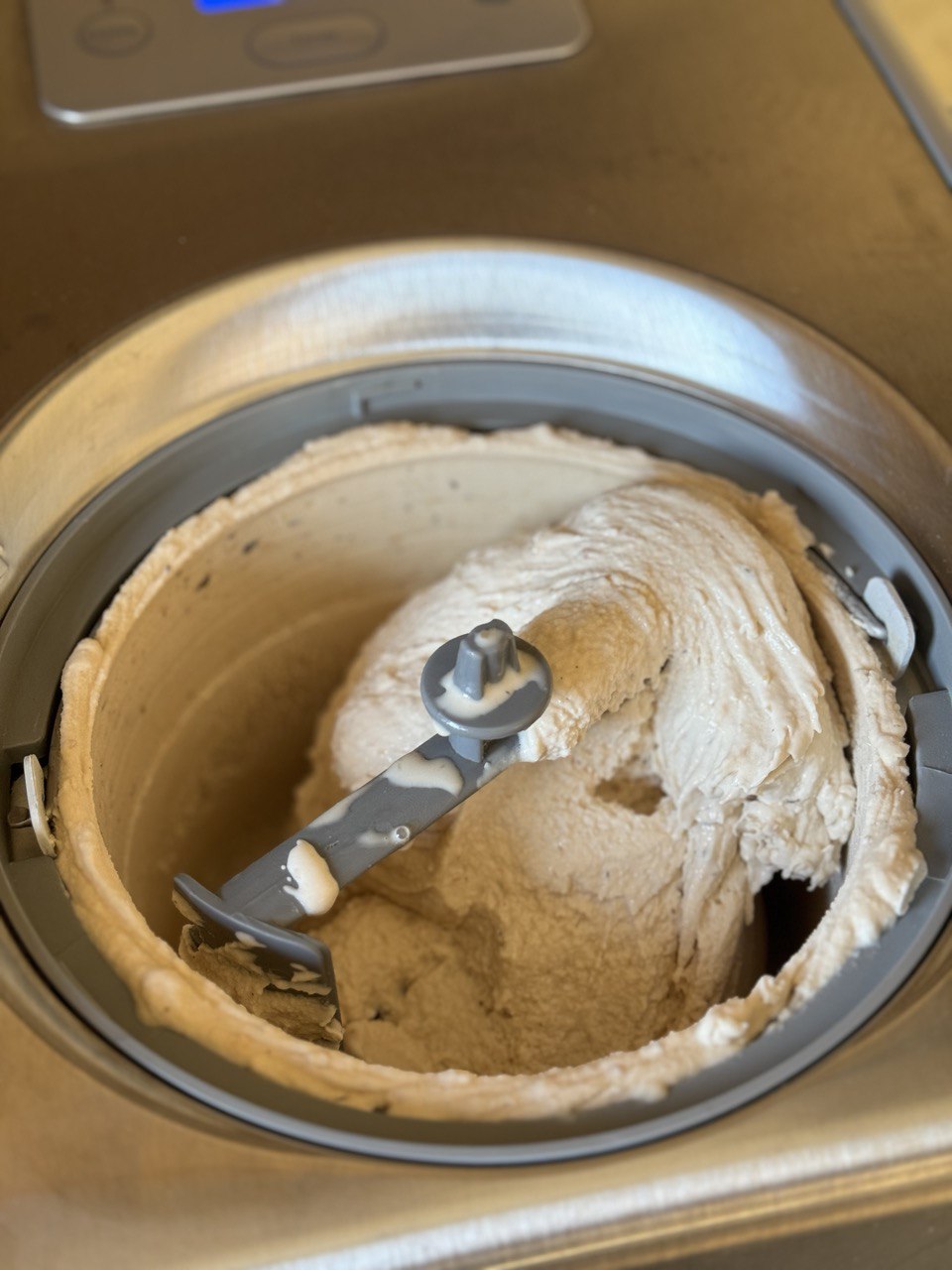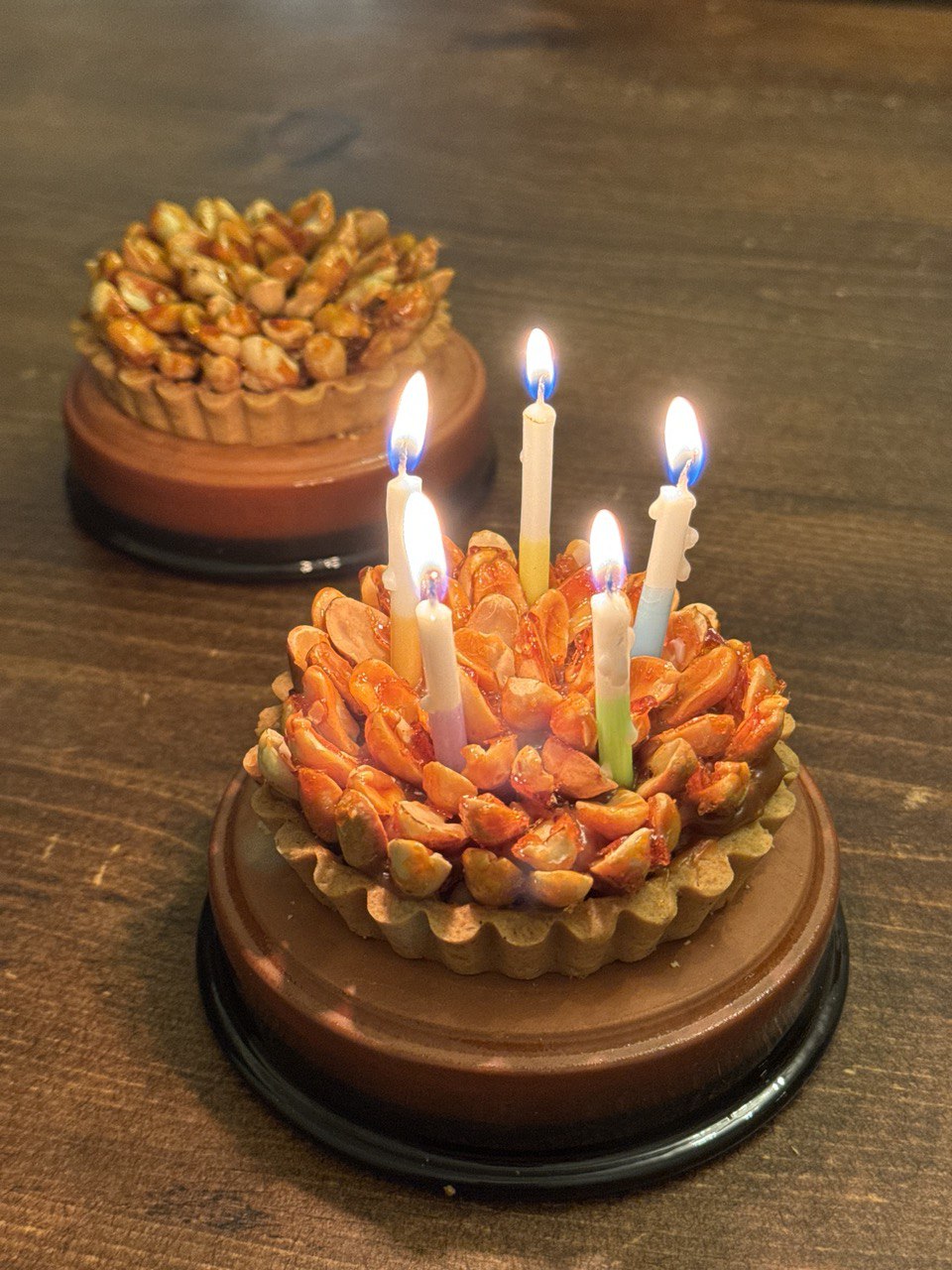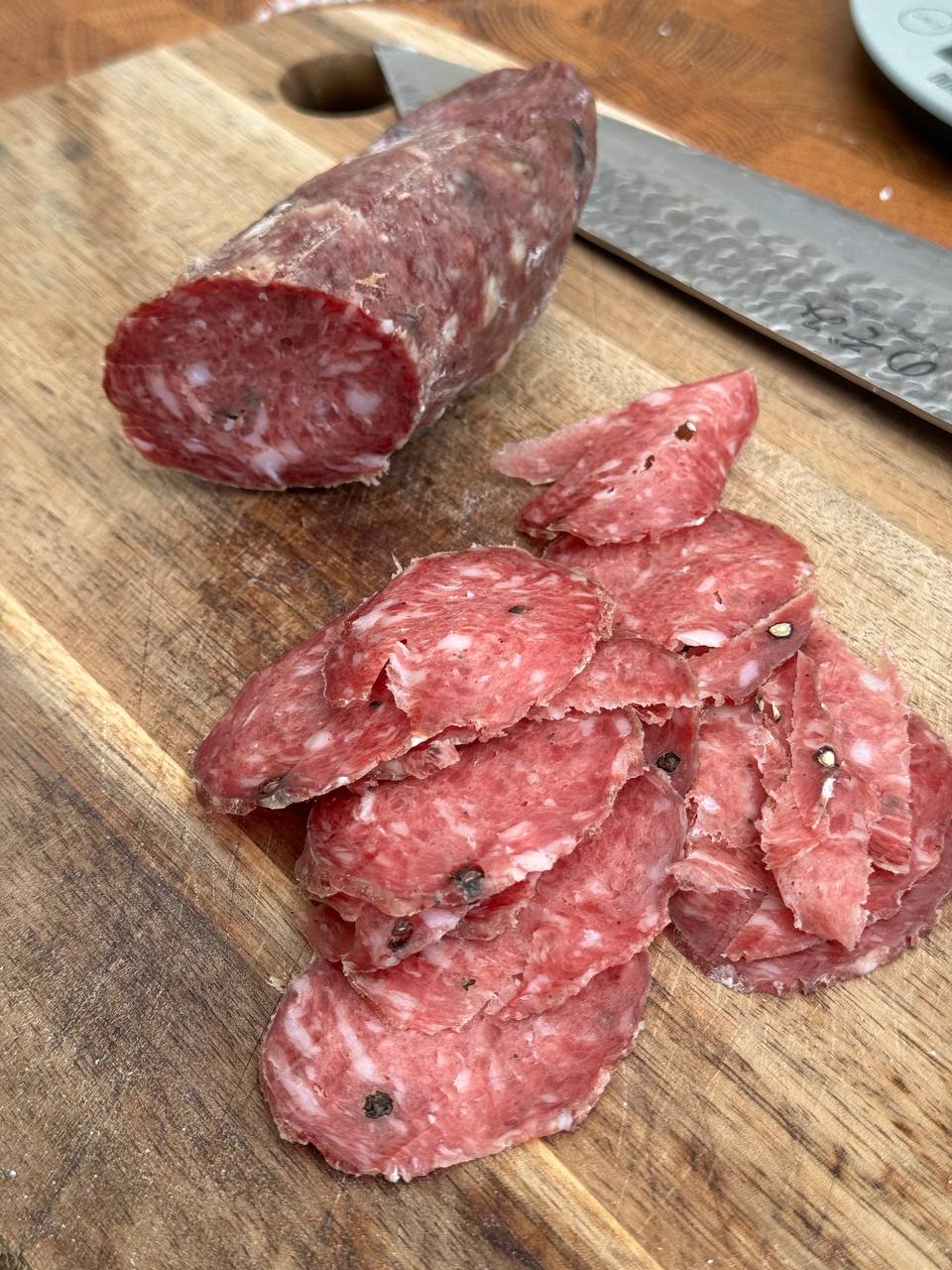|
Your weekly crème de la crème of the Internet is here!
06.09.2022 (read in browser)
Intro
Whatever is on my mind this week. Things I enjoyed reading
Ten-ish articles I found worth reading. Things I didn't know last Tuesday
Ten-ish facts I didn't know when I wrote the previous edition. Book of the week
Some thoughts on the latest book I've read.
This is the 112th edition of the newsletter, and as I mentioned recently while most of emails now require a paid subscription, once a month I will be sending out a free edition – this is it.
If you'd like to receive this newsletter every week, as well as get access to an archive of all previous free and paid editions, you can do it here.
Since the previous email you've missed three newsletters:
-
#109 on seasonal flavours, where I turnt borscht into a savoury popsicle, share a DIY cyclotron guide, and learn about the Buddha's last meal.
-
#110 on sweet things, where I remember how easy it is to make churros, consider doing stand-up comedy, and realise that I didn't know what Tutti Frutti is.
-
#111 on peach season, where I cook Grolet's peach and lemon verbena tarts, explore swimming in Thames, and research modern Portuguese cuisine.
On musicals
I consider myself a fan of musicals.
This was always a guilty pleasure of mine, from watching recorded sceneces from The Count of Monte Cristo in my childhood to queuing to The Phantom of the Opera in New York, from learning the whole Hamilton by heart to saving up for the first rows at Webber's Cats in London.
Recently we booked a bunch of performances for the Autumn and last week went for the first in the list – the Wicked – which is a West-End hit about untold parts of Wizard of Oz's universe.
|
|
|
And boy-oh-boy it was sad.
The decorations were splendid, and the story was... alright most of the time, but neither music nor sound didn't really work for both of us, so for the first time in years we just left after the first act and went to grab some food nearby instead.
The food was okay-ish too, but could've been better (especially given that this place blew my mind the last time we've visited their other branch).
|
|
|
On the flipside, over the weekend I got to try cooking porchetta from scratch, doing it the modern way: the pork loin is separated from the belly, and then a piece of shoulder is put inside instead.
|
|
|
Everything was cured overnight and then cooked on a rotisserie for a few hours.
|
|
|
Served with sliders, and it tastes as good as it looks:
|
|
Things I enjoyed reading
I used to play chess a lot in my childhood, and recently got back to it only, but lazily thinking through numerous gambits you had to memorise book by book is very different from the drive of a blitz party with a dozen of folks around. Seems like someone decided to took the latter to a new level:
Owen was very confused about why it took me 20 seconds of intense concentration to decide on my very first move. He eventually surmised that I must have "revised" and was concentrating hard to make sure I remembered the theory. In actual fact I was concentrating very hard to make sure I understood Sockfish's outputs correctly and gave my inputs correctly! I found that I concentrated much harder operating Sockfish than I do when I'm playing chess the hard way. Maybe I'd play better if I concentrated harder.
Probably the most hilarious part here is the input-output interaction. As you might imagine, it's not so simple with a computer in your shoe, but I won't be spoiling the details.
There is lots of conversation about food safety of 3D-printed things, and yet no attempts to research it properly. At least until now:
The same procedure was then repeated but using the protein residue swabs to test the 3D printed mask that I had inoculated with Salmonella typhimurium 2 hours previously. In the image below, you can see the control swab and how it has turned purple, this indicates an abundance of proteins. I then washed samples of 3D printed parts with Salmonella in just warm water so that I could take a protein swab test for a control. The test turned purple since water was not able to wash all residues away.
So seems like washing 3D prints works well enough to make them not only food safe but even medical-grade safe, and yet there are potential risks when it comes to unstable colourings and so on. Probable the author's advice of covering those pieces with resin would work well, but I still stick to printing negatives and making a silicone mold out of them instead.
This is a really inspirational story about learning things mid-way through life, and then just doing whatever brings you joy:
A few months into their new venture, the swing came first, to attract families. Ferrin installed the four poles, but was missing two hooks. The response he got at a local blacksmith shop changed his life. “The blacksmith told me he had no time for such a small job,” he says. “He pointed to a welding machine and said I could try to make one myself.” Ferrin spent the next three hours making a hook. He went back to his wife with red eyes and some low-grade burns—and two hooks for the swing. “I fell in love with it,” he says, “that feeling of having created something from a piece of metal.”
However I probably would steer clear from a DIY amusement park just in case.
Summer is probably the most popular time for folks to roam shores of the Thames hoping to find a yet another treasure but it seems to be way harder than I thought:
None of us find anything museum-worthy. One woman has a piece of salt-glaze pottery from the 1600s, another, a pipe stem from the 1700s. A man finds the top of a red Victorian teapot. I find a bit of blue-flowered china, which Haughey said comes from a Victorian dressing table stand, some unidentifiable stoneware, and metal bits, and, of course, pipe stems. We are urged to take away only one or two pieces.
Also seems like all treasures in the country belong to Her Majesty anyway, and even searching for them on the shore requires a license, so it probably won't work as a quick way to become rich.
This is a pretty cool interactive piece of journalism about a mile-long sculpture in a desert:
Even that it’s called “City.” It’s a city in name only. Exquisitely groomed dirt mounds, roads, buttes and depressions like dry lake beds spread out in no immediately obvious order and in different directions. At both ends of the site, monumental structures riff on ancient ruins.
Now, half a century after Heizer stuck his first shovel in the ground, “City” is finally opening to visitors, which may be the most unbelievable thing of all. It had become the art-world version of ancient Atlantis, a chimera.
Worth checking out from a desktop, not mobile phone as it didn't really work for me otherwise.
You probably got tired of my excitement about GPT-3, DALL-E, Copilot and all those other tools that might eventually take our jobs, but I don't feel guilty yet, and this is a great review of available text optimisation tools:
Some might ask “why finetune GPT-3 when you can finetune an open-source large language model such as BERT like every NLP project since 2018?” In this case, GPT-3’s advantage is that it was trained in the entire internet. GPT-3 is a master of idiosyncrasy, which is a key when working with Hacker News data and in theory would give better results than the Wikipedia-trained BERT. The success of Hacker News posts also depends on a global context outside of the title itself, which is why finetuning an existing model trained on such context may be better than training an existing model solely on HN data.
A few years ago I was actually running BERT against a smaller dataset of HN posts, and got one of those all the way up to the HN's front page, so pretty excited to give it a try again, especially with a way more refined approach.
I never wanted to be a writer, but somehow I write a lot, whether it's words or code. This is probably one of the best (and most inspiring) posts for those who do want to write on purpose, and yet can't find the right way to start:
Look around. What are other aspiring writers doing? That’s your ground floor. Your minimum. That’s where you begin. Double that. I promise you, this is the easiest path to success. What follows is specifics. But this is the general rule: Work harder than anyone else. If you don’t have this as your benchmark, you are going to have to rely on too much luck. And this blog post isn’t about the luck, it’s about how to minimize your required dosage.
Perseverance is probably the most important quality in anything (the second most important being to know when to give up), and yet people often overlook it.
It might look like an unrealistic story but those who are dealing with software long enough probably could tell at least a few similar ones: debugging is never about a programming language knowledge, it's more a way to test one's logical thinking:
By the third crash, he had noticed something. The crash occurred when the attendants were changing the tapes on an unrelated drive. And furthermore, he realized that the crash occurred as soon as one of the attendants walked across a certain tile on the floor.
This type of floor was made of aluminum tiles propped up by posts about 6 to 8 inches tall. The massive amount of wires that these computers needed were threaded under the floor tiles so that an unwary attendant wouldn’t trip over a crucial cable. The tiles were put together very tightly so that no debris would fall into the space where the wiring went.
That's why whenever I debug, the first thing to do is to observe: reproduce the issue multiple times reliably, understand what leads to an unexpected behaviour and only after that try solving it.
A pretty cool example of how an MRI bundled with a fancy display could bring you closer to sci-fi movies than any VR headset:
Looking Glass provides a Blender Addon which renders quilts. Quilts are image mosaics of each distinct viewpoint shown by the display. You can even render quilt animations and view them in 3D on the device! Having both spatial and time data to play with really opens up a mind-boggling range of effects. It can also take a mind-boggling amount of time to render, since each quilt consists of ~50-100 smaller individual renders. I’m 5233 CPU-hours into raytracing my first 250 frame animation, and still less than halfway done.
Just throwing out ideas here, but the next step could be sequencing the genome, visualising the DNA in 3D with something like Adenita and then displaying it in Looking Glass as well.
Seems like there is a market for folks trying to survive a potential apocalypse, and while some of them learn how to make fire without a lighter, others spend lots of money on fortified bunkers with swimming pools.
On closer analysis, however, the probability of a fortified bunker actually protecting its occupants from the reality of, well, reality, is very slim. For one, the closed ecosystems of underground facilities are preposterously brittle. For example, an indoor, sealed hydroponic garden is vulnerable to contamination. Vertical farms with moisture sensors and computer-controlled irrigation systems look great in business plans and on the rooftops of Bay Area startups; when a palette of topsoil or a row of crops goes wrong, it can simply be pulled and replaced. The hermetically sealed apocalypse “grow room” doesn’t allow for such do-overs.
Given those stories, watching zombie movies might as well be considered a self-improvement investment.
Things I didn't know last Tuesday
I knew how Stracciatella the ice cream is made (melted chocolate is poured into churning ice cream, so it solidifies and splits into drops), but I had no idea that the name comes from a soup cooked with a similar technique:
During the creaming process of Fiordilatte, he inserted a dose of hot dark chocolate that, thanks to the whipping of the blades, shredded the chocolate while it solidified. The effect is similar to one of the most popular dishes of his restaurant, named the Roman stracciatella.
The melted chocolate that solidifies and shatters in the batch freezer is reminiscent of the egg that binds in the boiling broth of the Roman stracciatella. "Roman stracciatella was the most famous consommé and, as for that soup, I was looking for an ice cream that could be loved and appreciated by my customers" said Panattoni, the inventor of stracciatella.
|
|
|
When I read stories like that I always wonder if there are any other cooking techniques that could be applied in unexpected dishes.
Among the things I'd love to eventually DIY one of the most wanted is a wooden cutlery set. I've tried spreading butter with a wooden knife at some tasting set and it definitely changed a lot about the perception of dishes.
While looking into possible ways to start, I came across this peculiar tool:
Sloyd is a word derived from the Swedish word Slöjd meaning handiwork or crafts. Therefore a Slöjd Knife could be considered a knife made for handiwork or crafts. In our context, Sloyd generally refers to an educational system developed in Sweden in the 1870s to prepare a student not only for a possible future work in a trade but also to prepare him for life in general.* The Sloyd system used a series of exercises to develop skills and confidence beginning with simple tools and tasks and slowly progressing to more advanced work. The Sloyd knife was one of the first tools to be taught, a foundation that all other skills were built upon.
No suprise Swedish folks are so devoted to their products.
There are not that many sources to support the theory, but it's an interesting argument: someone used image-altering software to simulate pictures through eys of colour-blind people and it actually makes Van Gogh's paintings subjectively better.
In summary, through the use of this software, I feel that van Gogh’s astounding use of color has become more available to me.
This is something not noticed by the color normal individual, and a dichromate may not notice either. Only an anomalous trichromat, somewhere between dichmomat and normal color vision, may notice it.
Even if not true, that's now my favourite party trivia.
When I think of Jamie Oliver I think of his KFC-making performance, but apparently he also pushed off the market something that looks like burnt Cheetos but was very popular all over the country.
One of Bernard Matthews' formed-meat products, Turkey Twizzlers, containing 34% turkey, became synonymous with cheap food for children. They became a subject of debate in 2005, when they were singled out for particular criticism by celebrity chef Jamie Oliver in his television series Jamie's School Dinners. The product became an emblem of the mass-produced processed food that Oliver wanted to remove from school meals. In the wake of the programme, several major catering organisations announced that they would no longer serve Turkey Twizzlers in schools.
|
|
|
In 2020 these things came back to the market (supposedly healthier than before), so now I just have to find some to try.
Last week I've mentioned how saltpetre was used in lieu of fridges in Victorian times and that took me down the rabbit hole. Another common use for it was gunpowder, so it was always in high demand, hence a dedicated group of people to roam the country, enter private lands and take the powder if they manage to find it:
According to Bown, pp. 33-34, it was Charles I of England who in 1626 made what was apparently the earliest proclamation ordering people to collect the contents of their chamber pots. (It almost makes you wonder if that's why they rebelled against him.) The result was the institution of the "saltpetermen" or "petermen" (Bown, pp. 36-38) -- people whose intrusive behavior hardly endeared them to the population. It's interesting to note that, in later usage, the word "peterman" came to mean a thief.
These days "peterman" is used as an archaic for a safe-breaker, so that's one logical etymology.
I was reading the notes from the Nordic Food Lab and they dedicated a few pages to make Marmite from scratch, because it's impossible to get in Denmark. The latter sounds odd, but seems to be true indeed (at least at the moment of publication):
The sales ban enforces a law restricting products fortified with added vitamins. Food giant Kellogg's withdrew some brands of breakfast cereal from Denmark when the legislation passed in 2004, but until now Marmite had escaped the attention of Danish authorities.
So the only Marmite's fault is its high nutritional value, seems like folks don't have anything against its taste.
A fresh research on fatigue caused by thinking:
Participants who spent more than six hours working on a tedious and mentally taxing assignment had higher levels of glutamate — an important signalling molecule in the brain. Too much glutamate can disrupt brain function, and a rest period could allow the brain to restore proper regulation of the molecule, the authors note. At the end of their work day, these study participants were also more likely than those who had performed easier tasks to opt for short-term, easily won financial rewards of lesser value than larger rewards that come after a longer wait or involve more effort.
That actually explains why after a tough day at work I want to order a few burgers and watch an action movie that won't require any brain efforts.
A good example of a technology that wasn't thought-through properly: cameras were easy to use, but as printing companies didn't upgrade their printers the quality was really bad, so they never really won the market.
The Kodak Disc camera was introduced with great fanfare in 1982. The new cameras were lightweight, foolproof (with auto-exposure and built-in flash), affordable, and used a brand new kind of film cartridge.
|
|
|
Looks pretty cool though, and the film was manufactured for a decade after cameras themselves went out of production, so seems like people were still using them.
It's not like I am surprised that there are different types of baking yeast, but this one is quite interesting:
Osmotolerant yeasts are strains capable of surviving and growing in high osmotic concentrations. High sugar or salt concentrations can reduce the availability of water, thus impeding regular yeast fermentation and growth. Examples of doughs that can benefit from osmotolerant Saccharomyces cerevisiae yeast include donuts, brioche and bread rolls.
This would probably explain why my first attempts at making brioche were a complete disaster: at some point I replaced the yeast that worked great for pizza with another one and things got noticeably better.
Think Instagram filters but 200 years ago:
The Claude glass is named for Claude Lorrain, a 17th-century landscape painter, whose name in the late 18th century became synonymous with the picturesque aesthetic, although there is no indication he used or knew of it or anything similar. The Claude glass was supposed to help artists produce works of art similar to those of Lorrain. William Gilpin, the inventor of the picturesque ideal, advocated the use of a Claude glass saying, "they give the object of nature a soft, mellow tinge like the colouring of that Master". Gilpin mounted a mirror in his carriage, from where he could take in "a succession of high-coloured pictures ... continually gliding before the eye".
|
|
|
Some folks even mounted those in their carriages, how posh is that?
Book of the week
I err on the side of caution when it comes to fermentation of any kind, and do my best to both play it safe and compensate the lack of skills by throwing money at better tools.
Sadly there is no enough space for a dedicated curing facilities, so I've been avoiding curing meats or aging cheeses so far, however there is another type of fermented foods that is way cheaper albeit more time consuming: miso, furikake, and other ferments from the East, you name it.
Rich Shih and Jeremy Umansky's Koji Alchemy is probably the most detailed guide on the topic I've found so far: think Harold McGee's On Food and Cooking, but only about koji and related products:
When you think about the sweet celebrated flesh, you might be asking why we wouldn’t make a nice amazake or kojizuke with it instead. The answer is pepitas, aka squash seeds, which are a mainstay in Mexican cuisine. When we first started our koji journey, we made a pepita amino paste with teff koji that we loved. It only made sense to incorporate the seeds into the squash flesh for an amino paste. As we’ve said before, you don’t need to be smacked in the face with a ton of umami; it’s the subtle complexity that elevates the flavor in such a way you don’t even really know it’s there. All you taste is the key component.
Whenever squash is in season, restaurants drown in squash innards. The easiest way to utilize them is to roast, season, and eat. However, with the fibrous hulls intact, most of us don’t find them to be that desirable. Cracking large quantities to supply a restaurant for service is not practical. Did you know that you can roast and grind squash seeds, hulls and all, to make a tahini-like paste? Did you also know that you don’t need to separate the strands of squash attached to the seeds? In fact, it adds great flavor when you roast them with the seeds. When it comes to full utilization of a product, let’s not stop there. Squash skins are normally removed and thrown out due to their toughness. But we’ve found that when you slice squash with the skin intact into wedges and brush the skins with oil, you get a browning that creates a depth of flavor when added to a miso. No waste also means less work!
An unrelated but fun thing about this quote is that the authors use squashes sourced from Dan Barber and his farm, and I just finished reading his book on sustainable farming a few weeks ago.
That being said, the Koji Alchemy is also a source of numerous very detailed recipes and tool guides.
Probably in a few weeks I will gather enough understanding to actually build my first fermenting chamber out of a styrofoam container and a PID controller, and then will take it from there.
Thank you and see you in a week
(or in a month)!
If you'd like to support the newsletter, please subscribe to the weekly plan. Otherwise you will keep receiving the letters on a monthly cadence – no need to do anything to opt-in.
If you have any questions, or want to suggest a link for the next newsletter, please drop me a message on Twitter or reply to this email.
Cheers! 🍸
|
|
|

